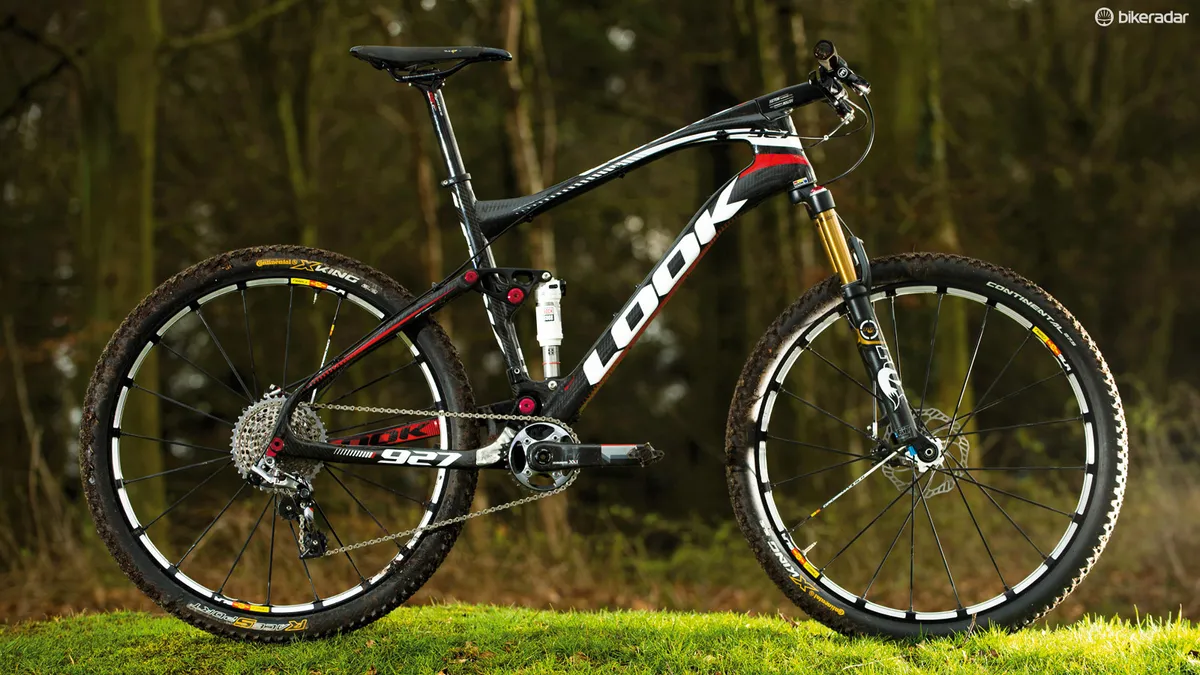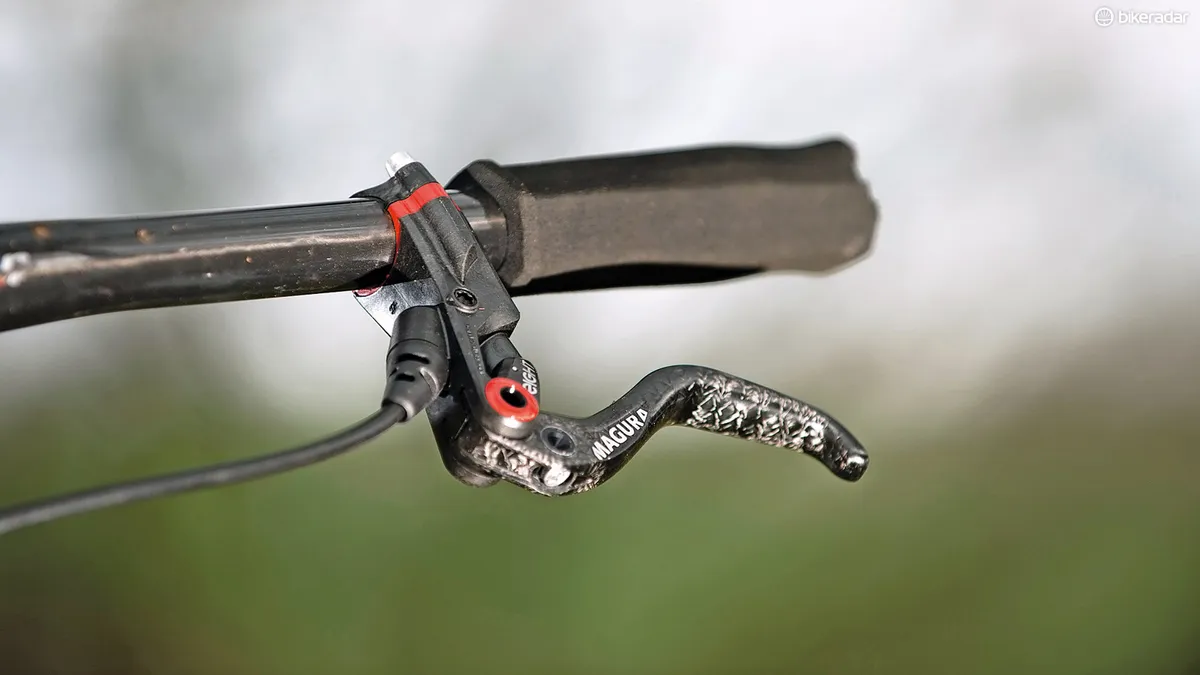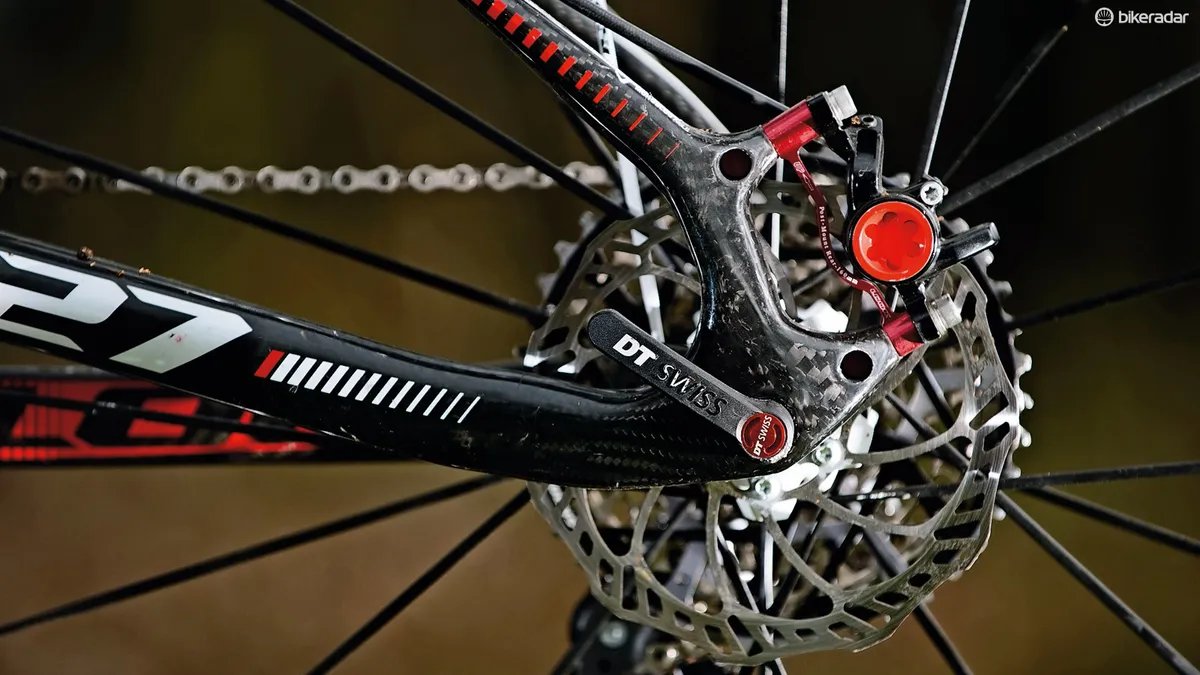In a world of increasingly similar carbon designs, French manufacturer Look has stuck its neck out with its new full suspension race machine. And the actual on-trail results are as characterful as the aesthetics.
Frame and equipment: taking advantage of technology
Since it turned ski-binding technology into the first ‘clipless’ road bike pedals, Look has always had an eye out for new performance advantages. That’s included pioneering properly aerodynamic road bikes and integrated stem systems, and it’s that latter innovation that’s the most obvious aspect here. The square section A-Stem is profiled to dovetail exactly into the hunchbacked top tube and head tube ‘notch’ for an almost seamless fit that dominates the distinctive aesthetics of the frame’s front end.
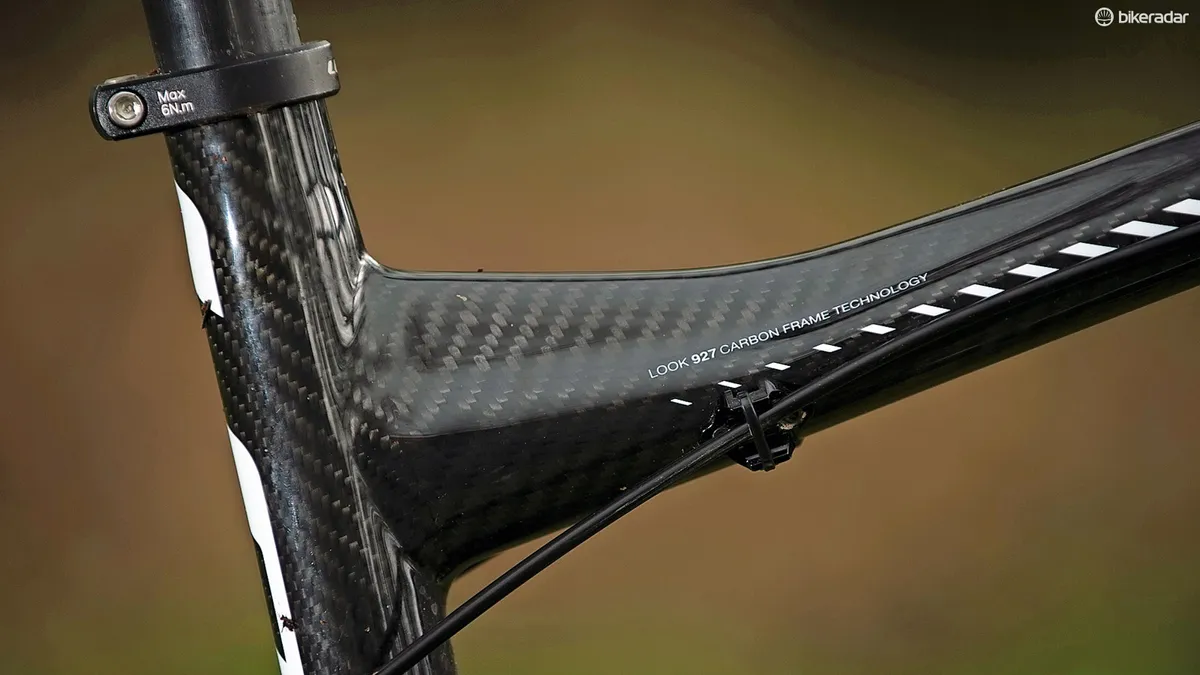
The one-piece mainframe is a cunning bit of composite trickery
If you’ve already looked at the pictures and been alarmed at the 110mm stem supplied on our bike, you’ll be glad to hear it normally comes with a 100mm model and can be ordered with 90 or 80mm alternatives. After trying and failing to adapt to the longer stem we fitted a normal 90mm model, which made the steering much less lurch prone and as predictable as the frame allowed. While the looks alone will be enough to win some riders over, the 927 Carbon isn’t a totally sorted speed machine – although it’s definitely a bike fans will enjoy despite its ride shortcomings.
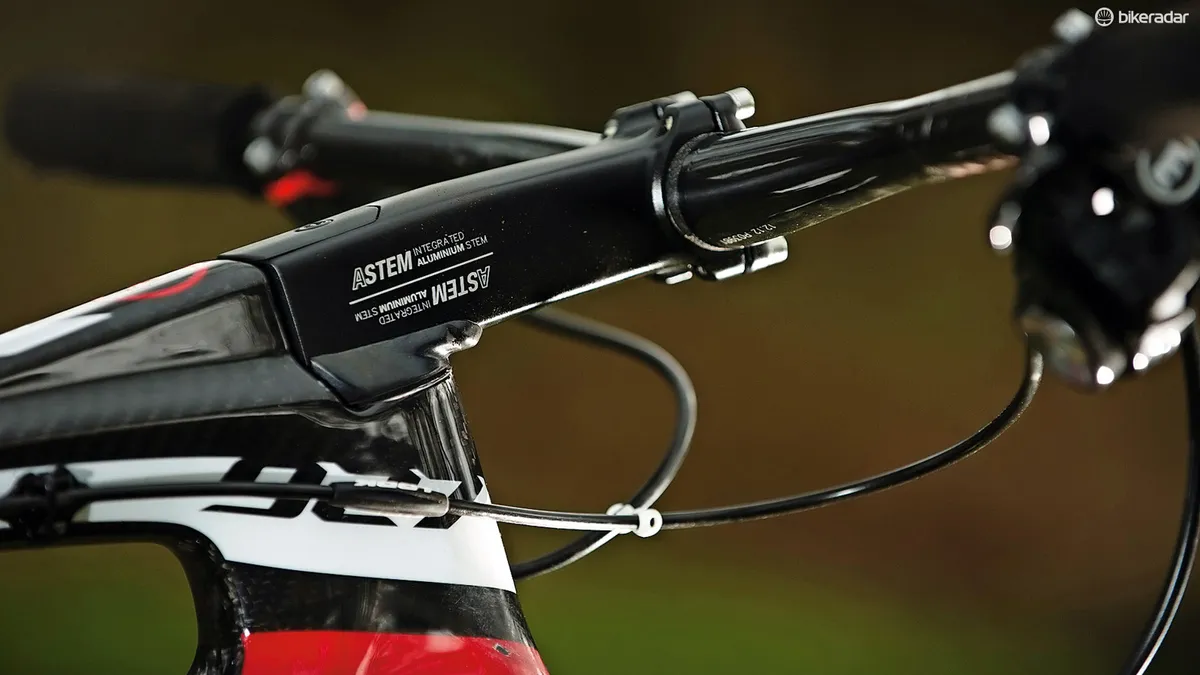
The stock 110mm stem is long enough to put you into next week, so use the 90mm
The claimed 2450g or 5.4lb weight of a small-size frame and shock isn’t actually that light for a shorter travel 650b bike. The single piece mainframe does feature a long metal deflector sheet of ‘metal moulded protection’ on the underside of the massive down tube, and there’s a plastic skidpan under the belly secured with three big bolts.
Look also gives the original buyer a five-year constructional warranty, but you’ll hopefully get more than half a decade out of a frame investment on this scale. Load it with cost-no-object SRAM XX1, Mavic, Continental and Syntace finishing kit like our sample though and it’s still heading towards the magic 10kg mark.
Ride and handling: a floaty light experience
After the bike almost floated out of the box we got a feel for how light it was, and with skinny-sidewalled rubber on Mavic’s lightest wheels its blistering acceleration was no surprise. The long rear end also keeps the wheel glued to the ground, so traction is very good as long as you keep it straight. While old-school racers will appreciate the longer stem option for flat-out fire road ripping, our switch to a shorter 90mm tiller added subtle line changing responsiveness and balanced control without ruining the racy feel.
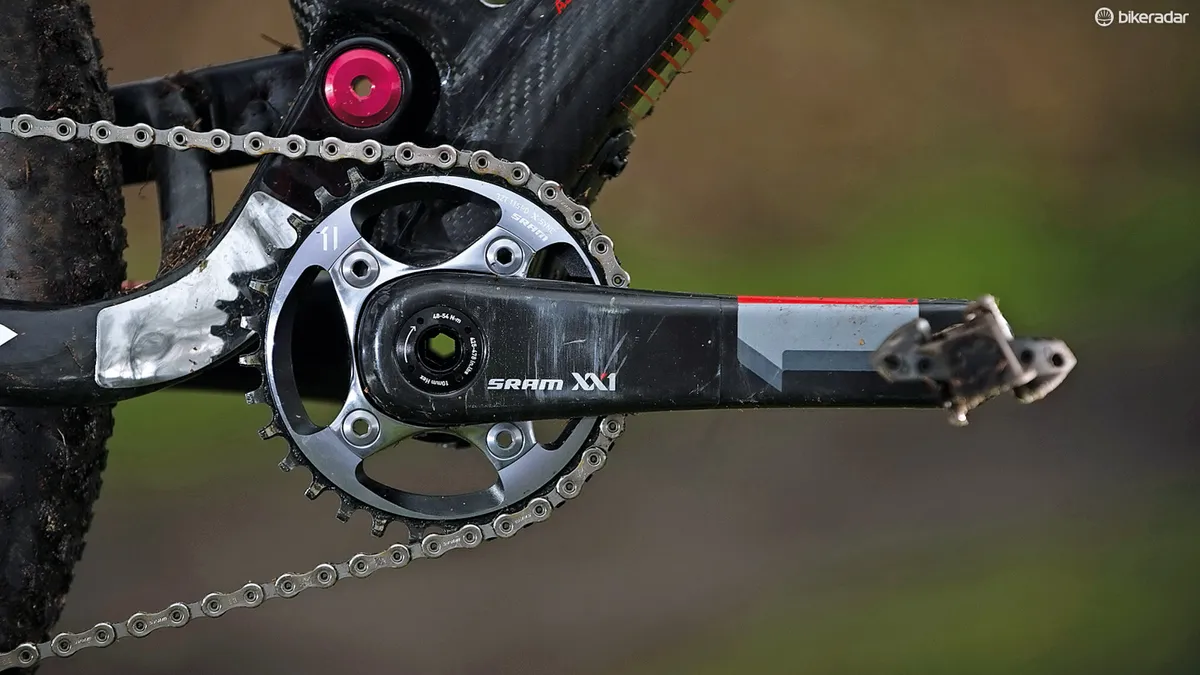
Stiff cranks just serve to highlight frame twist
What does take some getting used to at any speed is the amount of twist and flex you can feel through the frame. The front and rear ends of the bike feel distinctly disconnected if you start trying to fight across off cambers, ruts, more aggressive cornering moves or plough through rocky and rooty sections. Despite the drainpipe diameter down tube and a deep, extended bottom bracket section there’s noticeable twist in the front end that comes from the heavily cut away asymmetric seat tube and the top tube.
The long rear end and relatively short front also put weight and steering balance further back than most bikes, which makes it hard to hit and hold more challenging front wheel lines. The narrow, offset main pivot connection with steeply sloped bracing strut between the chainstays means the back end doesn’t get much transverse triangulation either. The result is obvious wheel flop and a generally vague rear wheel placement feel that sometimes stumbles or smears sideways without warning, even with a 142x12mm screw-thru axle.
The heavily shaped and snaked chainstays only just miss the cranks by a hair’s breadth when you’re really mashing the pedals. The zip tie cable mounts either side of the top tube are perfectly placed to scuff and gouge knees too, which is a really basic design flaw. Flex from the cantilevered bottom bracket area means the pedals seem to sway underneath the bike on peak torque climbs too. Like most bikes that use flex in the seatstays rather than a ‘proper’ rear pivot there’s a lot of bounce from the back end and shock unless you leave it in the compression damped Pedal setting.
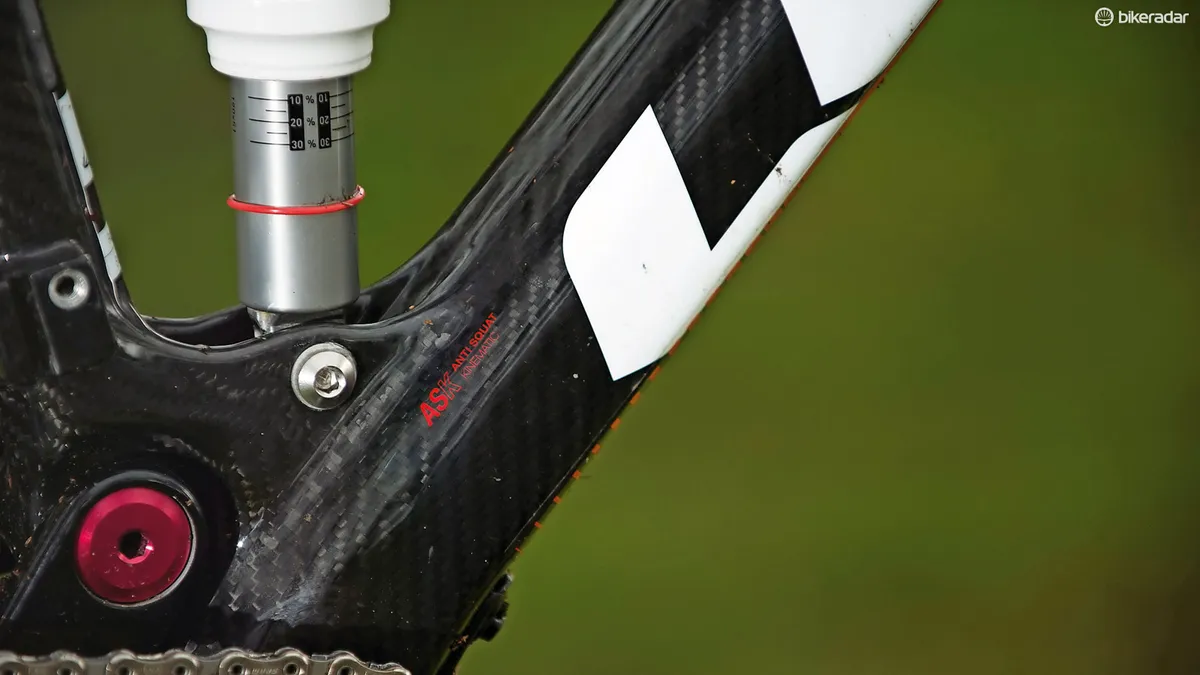
Even with a lot of sag, the rear end is reluctant to give up its 120mm of travel
The linkage setup and flexible seatstay effect also make it very hard to get close to full travel, even with the pressure set low with lots of sag. Unsurprisingly, that means it rarely feels like a 100mm travel bike, let alone a 120mm one, because it generally isn’t. It’s worth noting that the Fox Terralogic fork is the complete opposite in character too, with a very linear dive once the ‘automatic’ inertia valve threshold has been tripped by an impact, so it’s certainly not the ideal match to the frame feel.
While strong riders who like a rigid power platform will undoubtedly find the bob and torque twist a dealbreaking disappointment, it’s not a totally cut and dried situation on the trail. The more you get used to the sinuous frame feel, the easier it becomes to deliberately warp and weave the Look through tight trees like a hungry cat weaves between legs.
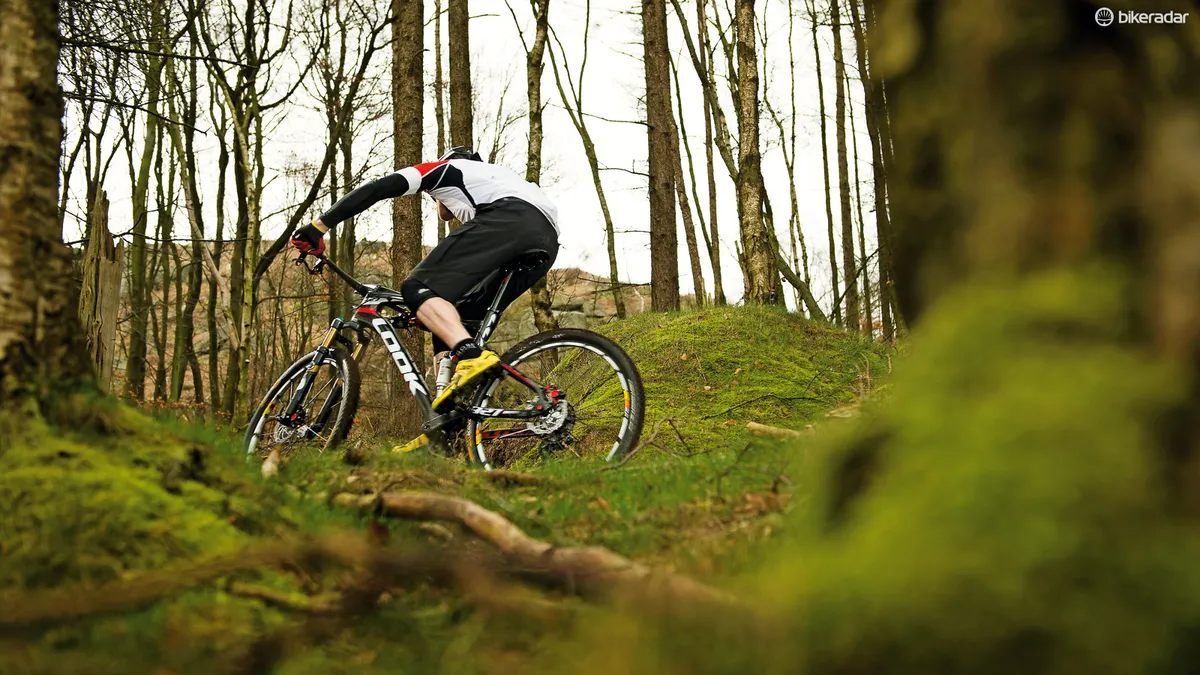
The Hungry Cat probably isn’t a model name we’ll be seeing anytime soon…
In some situations the compliance and softening of maximum power delivery can actually help to increase traction by smearing the treads across the trail rather than stuttering over staccato root and rock sections. The same buzz reduction and its natural tendency to swerve around rather than smack into obstacles also make it a very comfortable bike for spending an epic cross-country day on.
So there's lots to love, and lots to be annoyed by here. With so many bikes looking so similar, we can’t help applauding the Look’s distinctive design. The flex and low weight reminded us of classic twangy race bikes that we’ve loved when we shouldn’t have done – Scott Endorphin, Trek STP, Lynskey Ti, Lapierre XR 729…
It’s not as light as its flex suggests though, and the bouncy yet full travel-averse suspension, obvious power loss and knee-ripping cable stops really have no place on a full bike costing this much, never mind a frame on its own.
Specs As Tested:
- Top tube length - 588mm
- Seat tube length - 480mm
- Head angle - 69.5°
- Seat angle - 72.5°
- BB height - 333mm
- Chainstay length - 455mm
- Wheelbase - 1119mm
- Sizes - XS, S, M (tested), L
- Weight - 10.71kg (23.59lb)
- Frame - Look 927 VHM carbon fibre
- Fork - Fox F120 27.5 Terralogic 15QR, 120mm
- Wheels - Mavic Crossmax SLR 275
- Tyres - Continental X-King Race Sport, 650bx2.2in
- Cranks - SRAM XX1 34T
- Gears - SRAM XX1
- Brakes - Magura MT8
- Stem - Look A-stem
- Bar - Syntace carbon
- Seatpost - Syntace carbon
- Saddle - Fizik Tundra
